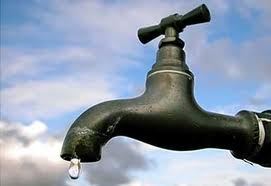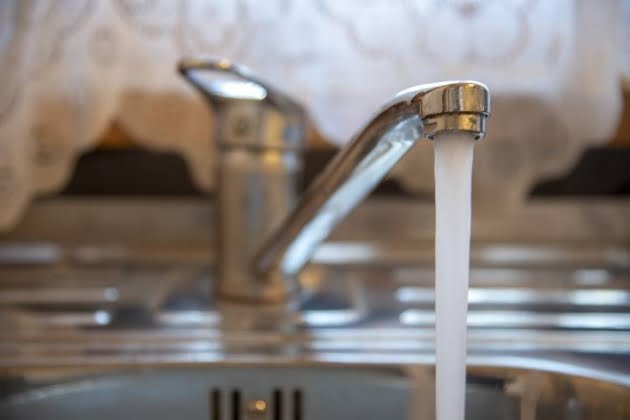How a Leaky Faucet Matters
How a Leaky Faucet Matters
Blog Article
How do you actually feel when it comes to The Environmental Impact of Leaky Faucets?

Intro
A dripping tap could feel like a small annoyance, yet its consequences prolong much beyond the occasional drip. Recognizing the results of a leaking faucet is essential for both home owners and the setting. In this short article, we'll check out the different influences of this usual home issue and why resolving it immediately is important.
Causes of Leaky Faucets
Dripping faucets can result from a variety of elements, including wear and tear, high water pressure, and corrosion. Over time, the constant use of taps can bring about damaged seals and gaskets, triggering leaks to develop. Additionally, too much water stress can place stress on plumbing fixtures, leading to leakages. Rust and rust can additionally deteriorate faucet parts, making them susceptible to leakage.
Water Wastefulness
One of one of the most considerable consequences of a leaking faucet is water waste. Even a small drip can amount to gallons of drainage in time. This not just drives up water expenses but likewise adds to water scarcity and ecological destruction. Dealing with leaking taps promptly is vital for saving this valuable source and minimizing its impact on the world.
Financial Effect
Along with drainage, dripping taps can additionally have a significant financial impact. Increased water bills are a direct consequence of water wastage, costing homeowners numerous dollars annually. Moreover, the cost of fixing water damage caused by leakages can be substantial, specifically if left unattended for an extensive period.
Ecological Impact
The environmental influence of leaky taps extends past water wastage. By saving water, homeowners can contribute to more comprehensive efforts to reduce water deficiency and protect natural ecological communities. Sustainable alternatives such as rainwater harvesting and water-efficient components can better reduce the environmental footprint of family water use.
Technical Solutions
Innovations in technology have brought about the growth of smart taps and water-saving tools that aid decrease water wastefulness. Smart taps make use of sensing units to find movement and change water flow accordingly, reducing waste without sacrificing ease. Water-saving tools such as aerators and low-flow showerheads are likewise effective in conserving water without endangering efficiency.
Worldwide Perspectives
While dripping taps might seem like a localized concern, they contribute to wider worldwide obstacles such as water scarcity and climate change. In areas currently dealing with water stress, every drop counts, making leakage avoidance and repair vital. By embracing water-saving practices and buying lasting innovations, home owners can play their part in addressing these pushing global problems.
Governing Measures
Government regulations play a critical role in reducing the effect of dripping taps and advertising water preservation. From building codes that require water-efficient fixtures to water-saving incentives and rebates, policymakers have a range of tools at their disposal. By implementing and enforcing these regulations, federal governments can make certain that home owners focus on water conservation in their lives.
Community Influence
Attending to leaking faucets calls for cumulative efforts at the community degree. By raising recognition regarding the importance of water preservation and offering sources for leak discovery and repair work, neighborhood authorities can empower home owners to take action. Campaigns such as water-saving rebate programs and leakage detection campaigns can incentivize actions change and promote accountable water use.
Case Studies
Real-life instances of the influence of dripping faucets highlight the value of aggressive upkeep and prompt repairs. From water damage to escalating water expenses, the repercussions of ignoring leaks can be severe. By sharing these study, homeowners can much better recognize the value of resolving dripping taps immediately.
Educational Campaigns
Educational campaigns play an essential role in elevating recognition regarding the effects of dripping faucets and promoting water preservation methods. Through workshops, seminars, and on-line resources, homeowners can discover how to identify and repair leakages themselves. By encouraging people with understanding and tools, educational projects can promote a culture of responsible water use within neighborhoods.
Health Problems
Dripping faucets can develop favorable environments for mold and mildew and mildew development, posing wellness risks to owners. The presence of mold and mildew can exacerbate breathing issues and allergies, specifically in vulnerable people. In addition, water damage resulting from leakages can endanger the structural stability of structures and bring about costly repair work.
Do it yourself vs. Specialist Repair
When faced with a dripping faucet, home owners usually discuss whether to attempt repairs themselves or work with a specialist plumber. While DIY repair services can save money, they may not always deal with the hidden problem effectively. Professional plumbings have the knowledge and devices to identify and repair leakages correctly, guaranteeing long-term options and assurance for house owners.
Preventive Measures
Preventing dripping faucets needs routine upkeep and aggressive measures. Simple tasks such as replacing worn-out washers and seals can avoid leakages from creating. In addition, updating to high-quality fixtures and reducing water stress can aid lengthen the life expectancy of faucets and reduce the risk of leakages.
Verdict
To conclude, the effects of a leaky tap extend much beyond the periodic drip. From water wastefulness and enhanced water bills to wellness worries and environmental influence, the repercussions of ignoring leakages can be significant. By attending to leaky taps promptly and embracing water-saving practices, house owners can mitigate these impacts and add to a more sustainable future.
Why You Shouldn’t Ignore a Leaky Faucet in Your Home
What Causes a Leaky Faucet?
Various factors can cause a leak, from loose and worn-out parts to corrosion. Your faucet has four essential components from which most plumbing issues will stem: the O-ring, the valve seat, the washer and the gasket.
What Is an O-Ring?
The O-ring is a stem screw that fastens parts of the faucet in place, preventing water from leaking out of the spout. Depending on your faucet type, the stem might have multiple O-rings. Water will drip from the faucet’s handles and base if this part breaks or deteriorates.
What Is a Valve Seat?
The valve seat controls the flow and temperature of the water. Found at the base of the handle, it works as a seal for the faucet’s stem. The valve seat ensures the water is allowed to flow or is blocked as the handles dictate. You’ll know it’s malfunctioning when water leaks from your faucet’s sides.
What Is a Gasket?
The gasket is found between the water inlet and the valve stem. It creates a seal between the faucet and the sink, holding its joints by aerators attached to the stem’s head. Water will trickle out from the base if the gasket isn’t working.
What Is a Washer?
The washer secures the handles and prevents leakage, serving a similar purpose to the O-ring. While the O-ring is ordinarily round and made from an elastic material, such as rubber, the washer is square-shaped and composed of brass, copper and other hard metals. If it malfunctions, corrodes or has been improperly installed, water will leak out of the handles, causing that incessant faucet drip.
Why Is a Leaky Faucet Dangerous?
A leaky faucet left alone for too long can have significant consequences.
Pest Infestations
Since bugs and rodents gravitate towards the scent of water, a leaky faucet will draw pests to your sink. Both are looking for leaks accessible through crawl spaces, which a faucet provides. If you leave water dripping for too long, you run the risk of an infestation.
Rust
If one of the faucet parts has started to corrode, the resulting rust can spread to your pipes and valves with startling speed. The rust might even lead to cracks or other impairments, resulting in more severe plumbing issues.
Your sink could also sustain damage from a leaky faucet. The water in your tap possesses sparse elements of calcium and iron that can stain your sink with repeated and prolonged exposure. Once those elements in the water have been open to the air for some time, your sink will start to rust, creating marks that can be difficult to remove.
https://www.tomsmechanical.com/blog/why-you-shouldnt-ignore-a-leaky-faucet-in-your-home

Do you really like reading about The Environmental Impact of Leaky Faucets? Put a remark below. We would be delighted to see your reactions about this write up. Hoping to see you back again later on. Remember to take the opportunity to promote this blog post if you appreciated it. I love your readership.
Report this page